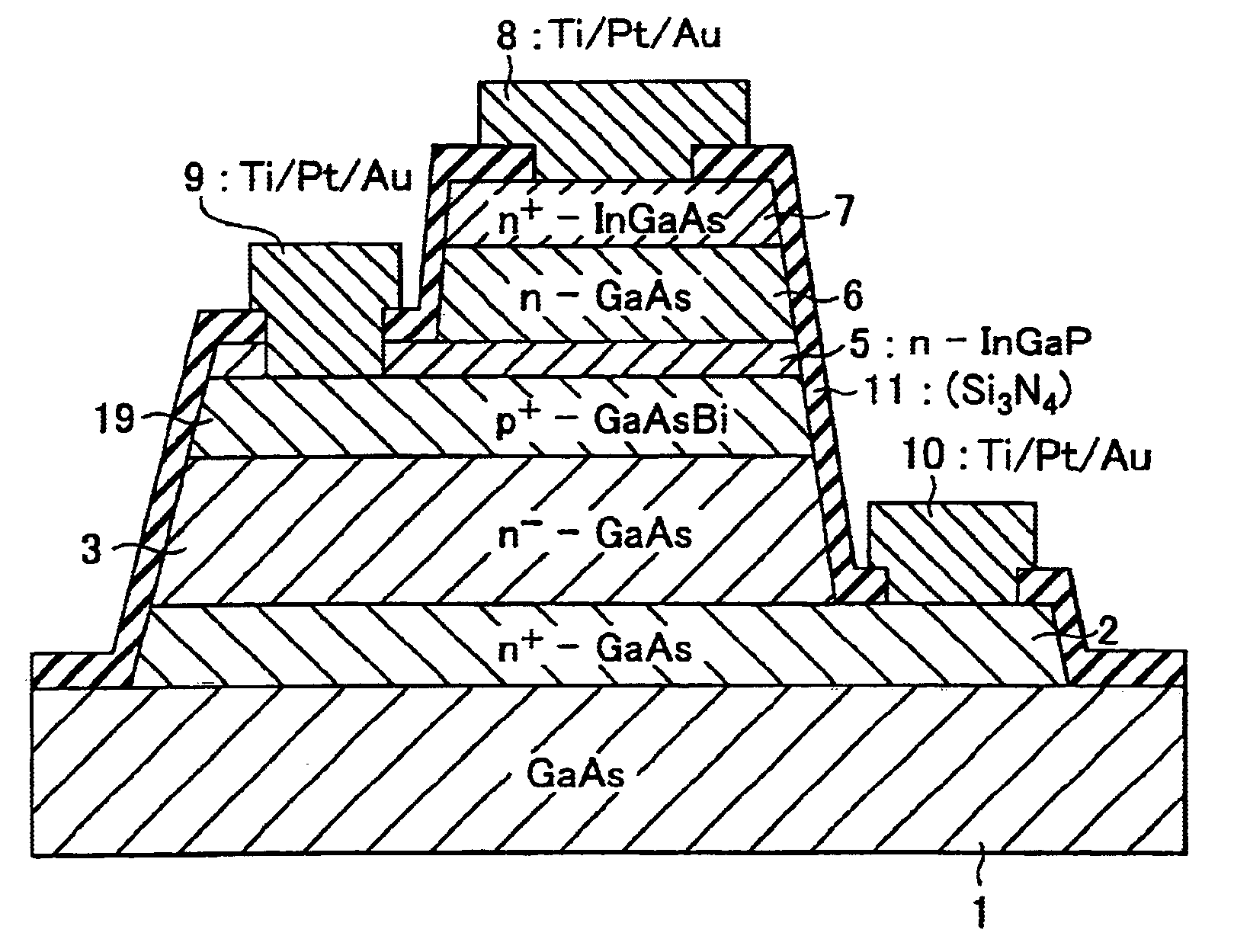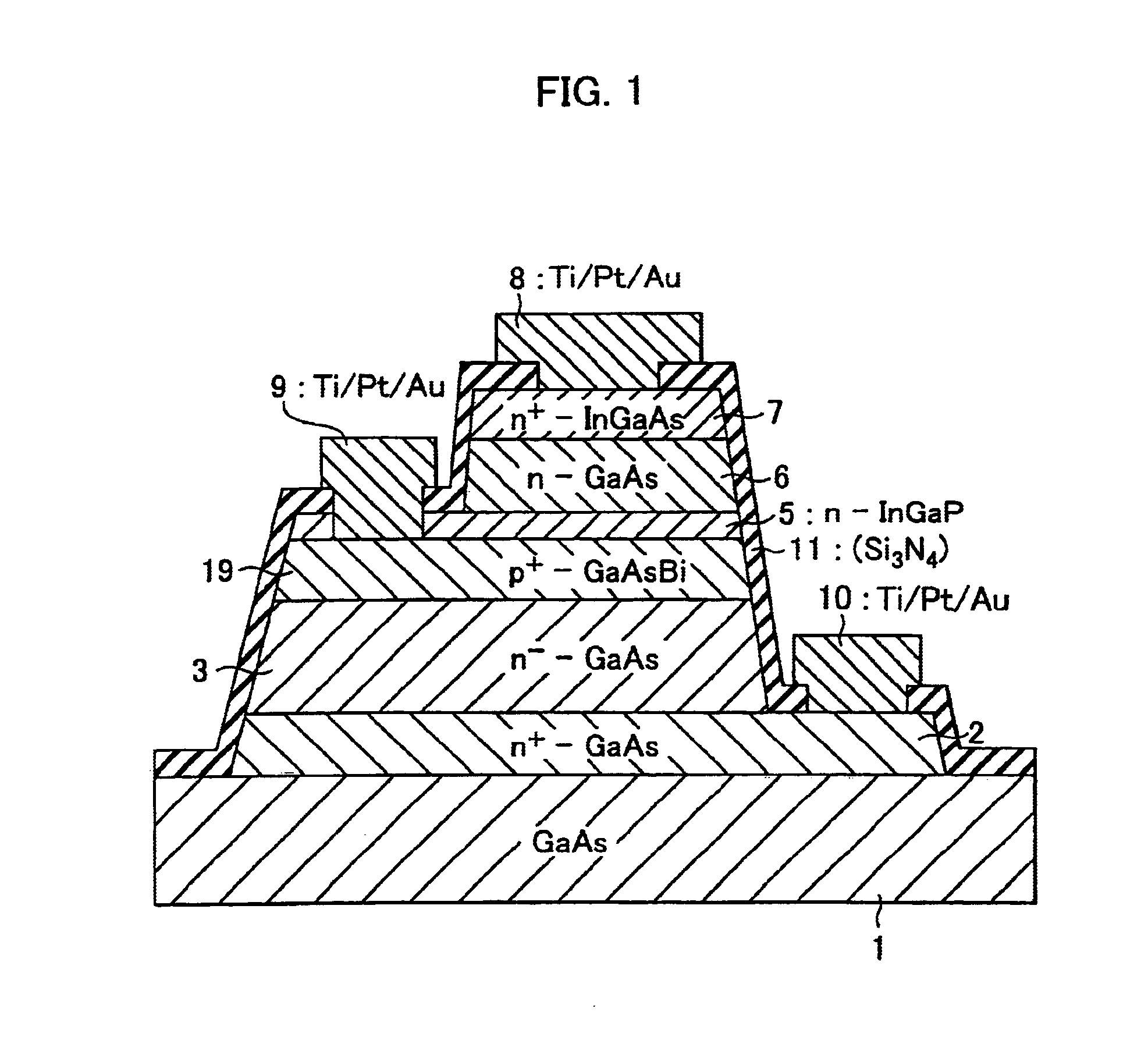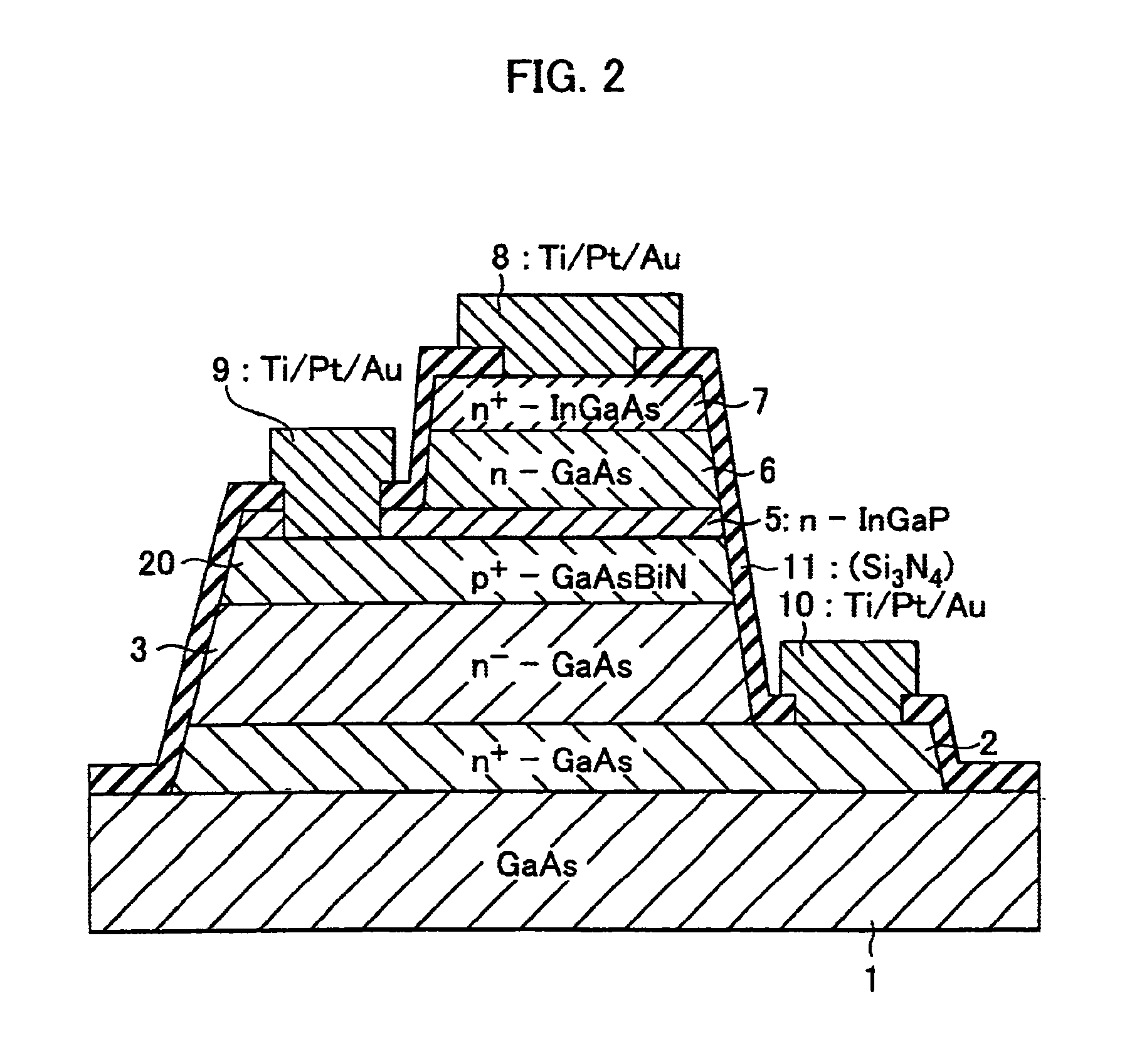Heterojunction bipolar transistor with a base layer that contains bismuth
a bipolar transistor and base layer technology, applied in the field of semiconductor devices, can solve the problems of reducing the maximum oscillation frequency fsub>max, the reduction of the base resistance is an important challenge, and the non-adjustable operation of the electromechanical device, so as to improve the basic performance of the hbt, reduce the base resistance, and improve the moving speed of the electrons
- Summary
- Abstract
- Description
- Claims
- Application Information
AI Technical Summary
Benefits of technology
Problems solved by technology
Method used
Image
Examples
first embodiment
(First Embodiment)
[0038]FIG. 1 shows a semiconductor device according to a first embodiment of the present invention. GaAsBi is used for a base layer, and the remaining configuration is the same as the configuration shown in FIG. 7. In FIG. 1, components identical to those in FIG. 7 are designated with the same reference numerals.
[0039]As shown in FIG. 1, the semiconductor device according to the first embodiment includes a subcollector layer 2, made of, for example, n+-GaAs, a collector layer 3 made of n−-GaAs, a base layer 19 made of p+-GaAsBi, an emitter layer 5, made of, for example, n-InGaP, a first cap layer 6 made of n-GaAs, and a second cap layer 7 made of n+-InGaAs, which are successively stacked on a substrate 1, made of, for example, semi-insulating single crystal GaAs.
[0040]An emitter electrode 8 is formed on the second cap layer 7. For forming a base contact, portions of the first and second cap layers are removed to form a mesa structure. The emitter layer 5 may be int...
second embodiment
(Second Embodiment)
[0043]FIG. 2 shows a semiconductor device according to a second embodiment of the present invention, in which GaAsBiN is used for a base layer. Specifically, the second embodiment differs from the first embodiment shown in FIG. 1 in that the base layer 19 made of p+-GaAsBi is replaced with a base layer 20 made of p+-GaAsBiN, and the remaining portions are the same as in the first embodiment.
[0044]In this configuration, the addition of Bi to GaAs serves to make the lattice constant of the crystal larger than GaAs, although the addition of N (nitrogen) serves to make the lattice constant smaller. This reduces the lattice mismatch between the base layer and the GaAs layer (the collector layer) found in the first embodiment. Thus, it is possible to form a thicker base layer than the base layer made of GaAsBi or to increase the energy level at the valence band edge by increasing the amount of Bi, while the advantages described in the first embodiment are maintained. Co...
third embodiment
(Third Embodiment)
[0046]FIG. 3 shows a semiconductor device according to a third embodiment of the present invention, in which GaAsBiN is used for a base layer, and GaAs is used for an emitter layer. Specifically, the third embodiment differs from the second embodiment in that an emitter layer 21 made of n-GaAs and a cap layer 22 made of n+-InGaAs are successively stacked on the base layer 20 made of p+-GaAsBiN. The remaining portions are the same as in the first and second embodiments.
[0047]In the above configuration, as compared with the emitter layer made of InGaP used in the first and second embodiments, the energy at the conduction band edge of the emitter is reduced to lower the turn-on voltage at the emitter-base junction. Thus, the Knee voltage Vk in the Ic−Vce characteristics can be reduced. The reduction in the Knee voltage Vk is important since it increases the power added efficiency (PAE) of a power amplifier (PA). The emitter layer made of GaAs is effective because GaAs...
PUM
 Login to View More
Login to View More Abstract
Description
Claims
Application Information
 Login to View More
Login to View More - R&D
- Intellectual Property
- Life Sciences
- Materials
- Tech Scout
- Unparalleled Data Quality
- Higher Quality Content
- 60% Fewer Hallucinations
Browse by: Latest US Patents, China's latest patents, Technical Efficacy Thesaurus, Application Domain, Technology Topic, Popular Technical Reports.
© 2025 PatSnap. All rights reserved.Legal|Privacy policy|Modern Slavery Act Transparency Statement|Sitemap|About US| Contact US: help@patsnap.com



